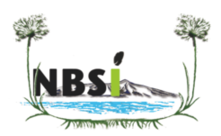Farmlands
Tropical agro-ecosystems can potentially support high biodiversity. Subsistence farming plots around the Naivasha area, for example in Kinangop, in the Upper Malewa and in the Upper Gilgil (see map below), tend to  host a richness of bird species that can be even greater than the one found in natural forests nearby. Low intensity human impact can only support high biodiversity if the structural diversity of the agricultural landscape contributes to the creation of a large number of heterogenous habitats. Such agricultural landscape types include forest galleries, hedgerows, marshy streams, river-side wetlands, and different crops. These kinds of agroforestry practices are common among Naivasha subsistence farmers and contribute to the provision of additional biotopes that can be exploited by a variety of insects and birds. However, not all forest animals can find the resources they need in subsistence farmlands; such species are considered forest-specialists. Within the traditional agricultural landscape, forest patches act as sources of dispersal for a large number of species. For these reasons it is essential that existing forest patches are preserved between continguous farms.
host a richness of bird species that can be even greater than the one found in natural forests nearby. Low intensity human impact can only support high biodiversity if the structural diversity of the agricultural landscape contributes to the creation of a large number of heterogenous habitats. Such agricultural landscape types include forest galleries, hedgerows, marshy streams, river-side wetlands, and different crops. These kinds of agroforestry practices are common among Naivasha subsistence farmers and contribute to the provision of additional biotopes that can be exploited by a variety of insects and birds. However, not all forest animals can find the resources they need in subsistence farmlands; such species are considered forest-specialists. Within the traditional agricultural landscape, forest patches act as sources of dispersal for a large number of species. For these reasons it is essential that existing forest patches are preserved between continguous farms.
The on-going conversion of subsistence farming into intensive plantations is threatening the preservation of a rich and often underestimated natural biodiversity, supported by Kenyan traditional subsistence farmers.
- Birds of farmlands
- Payment for Ecosystem Services
- Nbabibi Environment Education Centre
- Lakeshore farming
- African Forest



